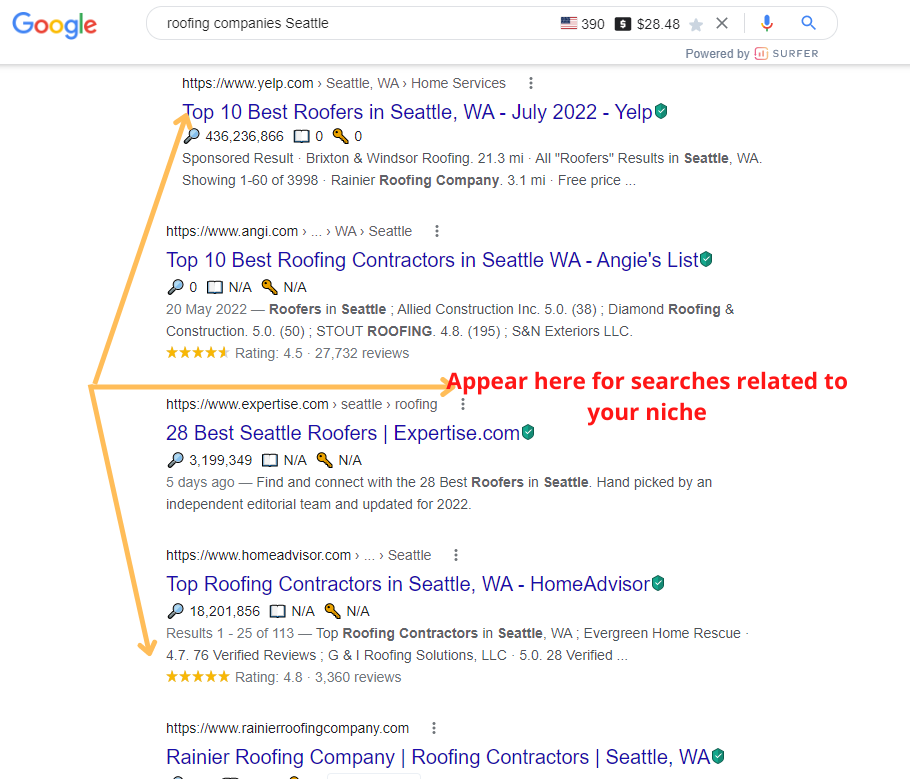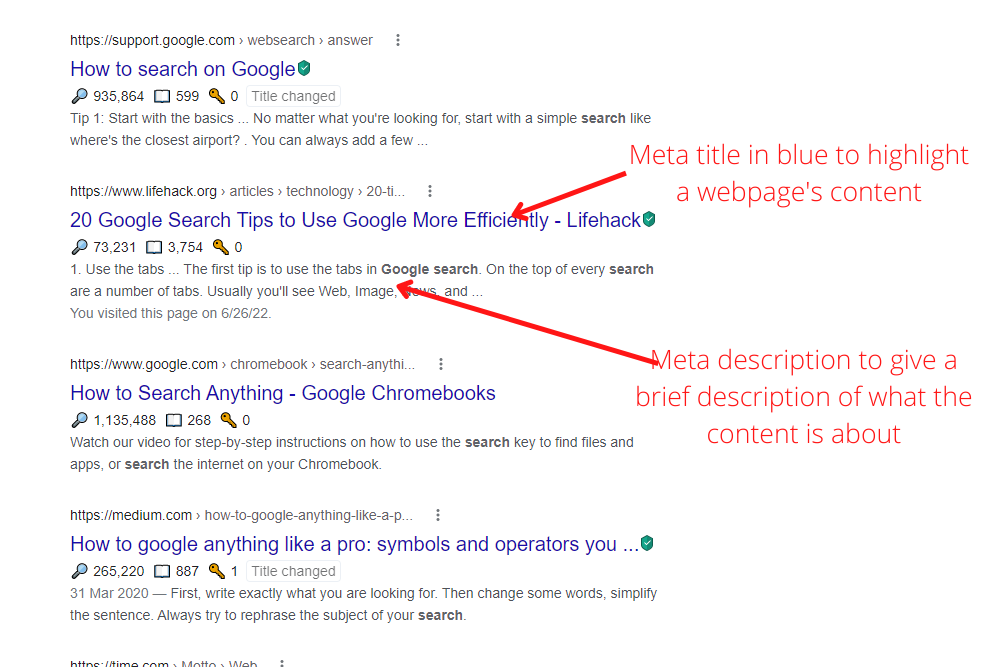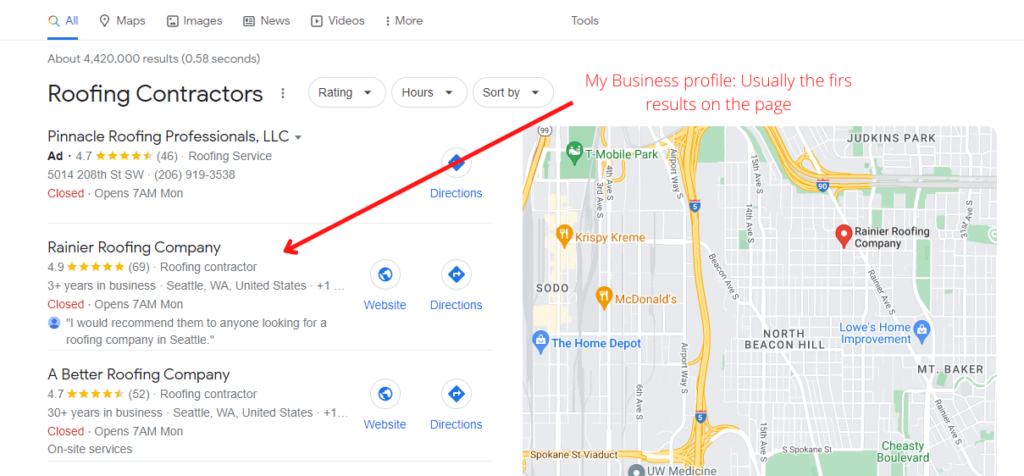How to appear on Google search
Introduction
For any business with a website, visibility and attracting organic traffic on Google is an important goal. Google is a powerful search engine that uses bots to crawl the web and determines the websites that are most relevant to a user. Websites are then ranked on the results page according to the criteria used by these crawlers. Google has to determine that a searcher’s query is relevant to your page. Ideally, websites should aim to be on the first SERP (search engine results page) if they want to succeed. No one visits the second page.

This may seem like a tall order for smaller websites competing for the same space as larger, more established sites, but it’s not that hard to feature on the first page as well. Google crawlers go through all web pages available, select the most optimized websites, and reward them by ranking them higher.
Optimizing your website, making a few changes, and tweaking things here and there is your best bet at appearing on searches.
Importance of appearing on the first page
Appearing on the first results page is crucial if you want your website to do well and grow. The first results page is a highly competitive space and takes effort to get there, but it is well worth it. Some of the advantages of your website appearing on the first results page include but are not limited to:
- Improved visibility
Higher rankings on SERPs mean more visibility for your website. Traffic and click-through rates are highest on the first SERP. Not only that, but there’s also a significant decline in traffic to the first vs. last websites ranked on the first page.
Engagement scores decline as you go down the page.
- Immediate exposure
Ranking on the first page exposes your business to more people interacting with it, which could convert to more traffic and click-throughs. Interactions with your website are essential as they will eventually convert to customers.
- Increased industry authority
Google crawlers use a set of criteria to make sure that only the best sites are ranked first. Ranking on the first page means that your website and its content are relevant and provide immediate solutions to users. People trust your brand and will likely purchase from you or come back.
How to be found on Google
1. Get a simple domain
Choosing a domain name that reflects the purpose of your website is an ingenious way to get traffic to your site. Human beings are inherently simple creatures. A person is likelier to click on a website with a domain that is easy to understand with your focus keywords rather than one filled with random numbers and letters.
For example, if your business is fixing roofs and wants to create a website where potential clients can see what services you provide, choosing a domain name with the words roof in it would be ideal. www.roofingservices.com would be indexed by Google crawlers making your site appear when a person conducts a search.
2. Use location if available
If your business has a physical location, add it to your website. Studies show that people search local businesses online first before making a purchase. Using the above example, if the roofing services company was located in Seattle, the owner could add the location as part of the domain name www.roofingservicesseattle.com. This will appear in roofing services searches for a person living in Seattle.

This specificity will make you appear when people search the services you’re providing combined with a physical location. Add your business on maps and provide an accurate address for an even better ranking. Of course, the more specific your location, the better and easier it is to be found and create organic traffic to your site.
3. Submit your site to Google
Although it takes time for new websites to appear on Google searches, you can boost the processing speed by submitting your sitemaps to Google via the search console. Google search console allows you to submit your site for indexing.
Search using your homepage’s URL to determine whether your site is already included in Google’s search index. If it appears, you’re good to go; if it doesn’t, the search console will help. The search console has a lot more functionality than just assisting with the indexing of your website; it can also provide stats on how your site is doing, traffic and user interactions, and much more.
4. Create a keyword strategy
Keyword mastering is a necessity in SEO. We’ve described what keywords are in our previous article here. Keywords make it easy for Google to scan and index your web content. Learning how to use keywords properly is vital because misusing them (keyword stuffing) can lead to penalties from Google. Placing keywords strategically within your website and content is an art form you should invest time in learning. With proper keyword use, your site will be indexed and ranked higher on results pages, giving you more visibility for your niche.
Here is our list of the best keyword tools in the market right now, and the best part is that they are free to use or have free-to-use options.
5. Optimize your metadata
Although Google has made it known that metadata does not affect SERP rankings in any way, metadata is still important in getting visitors to your site.

Metadata consists of a meta title and a meta description of a webpage on the web. Metadata helps viewers know at a glance what your page has to offer if it contains the information that would make them click your link.
Use clear and concise wording of the title and describe the content in a few carefully chosen words. Metadata helps you get seen, helps people decide to interact with your content, and helps Google identify your content’s relevance to users.
6. Optimize your Google My Business page
Listing your business on Google My business is an option a business with a physical location can opt for for more visibility. It helps significantly with the visibility of your business when people search online. It’s imperative to provide as much information about your business as possible. Complete business profiles get more clicks than incomplete ones.

Keep your business information correct and up-to-date, and update your profile and content like images if available. Follow through with claiming and verifying your listing to monitor, maintain, and optimize it as you see fit.
7. Create user-centered content
Focusing on ensuring your website is good enough for Google may make you lose track of user satisfaction, potentially harmful to your rankings, especially keyword stuffing. Google can detect this and penalize your site. Provide valuable, trustworthy, easy-to-read, and informative content, not just the keyword.

Make your website easy to navigate and provide information that answers a visitor’s most immediate questions.
A good rule of thumb to remember is to make content for human consumption, not Google bots.
8. Be mobile-friendly
Mobile devices like smartphones have taken over from the bulkier solutions like computers. It is estimated that three out of five Google searches happen on mobile, and more than fifty percent of general traffic has switched over to mobile. Optimizing your website, so it’s visible on different device types is imperative. Google is user satisfaction centered and favors mobile-friendly websites over desktop ones. If available, the best option is to use responsive mode for your website, as it will adapt to any screen size. If this option is not available, it is possible to tweak your site’s settings manually. A mobile-friendly site is:

- Fast and has good loading speeds. Faster sites rank higher on Google and keep visitors engaged or coming back.
- Learn and keep up-to-date with best practices for mobile web design.
- Keep your mobile website clutter-free.
9. Work on your backlinks
Backlinks are links that point back to your website or web pages from other websites. They are important because they signal to Google that your content is reliable and improve your ranking, which may lead to more traffic to your website. An excellent way to create backlinks is through outreach to other websites by writing content for them. Another way is to create content that is so good other publications use it. Backlinks help assert dominance in your niche, leading to a higher click-through rate and hence higher rankings on Google.
Note: It is better to have a few high-quality backlinks from established websites that have low-quality ones. Google can detect and penalize your website if the algorithm thinks your backlinks are spammy.
10. Use Google
Google offers a lot of information, written and video tutorials, about optimizing your website, so you rank on the first results page. This information is free and straight from the source, so you know you can never go wrong.
Set aside time to go through materials necessary to gain knowledge on optimizing your site, which in turn creates visibility for your site.
Conclusion
The key to appearing on Google searches for your niche is ensuring your website and content are optimized for Google. Optimized content improves your ranking on the search results page, especially for the first page. This drives more traffic to your site, which could mean a higher click-through rate and potential customers.
The SEO process is never-ending, but the rest will be easy once you get the hang of it. Catching up with all the latest trends and updates and working on improving your output. Don’t get tired of working to improve your site; remember to have fun with the process.

